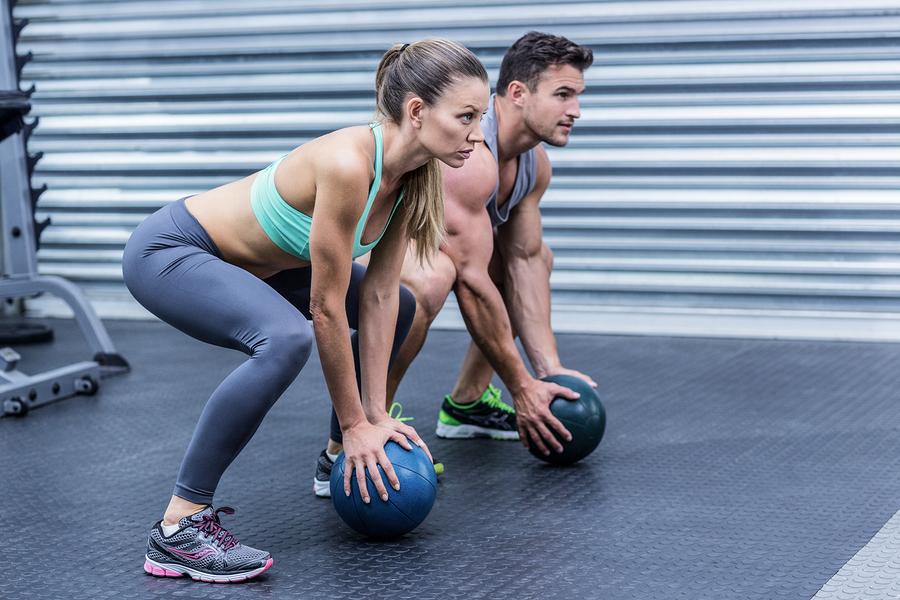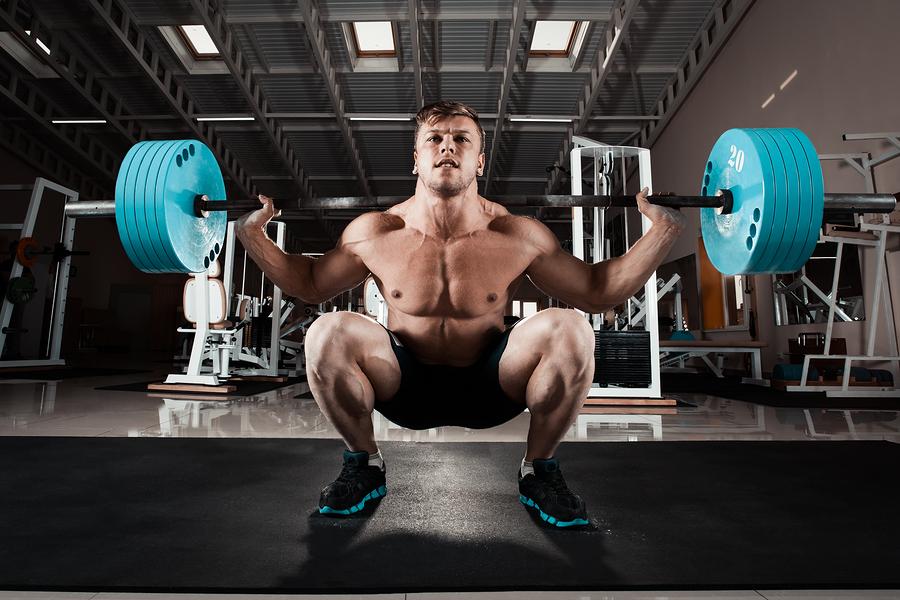
What is a Squat?
A basic squat is a compound movement that works the quadriceps, glutes, hamstrings and calf muscles. A squat is completed by bending the knees from standing until in a near-sitting position, then standing back up to a full standing position. The lower the squat, the more effort it takes to complete. The entire lower body undergoes a workout with this movement, and it elevates the heart rate relatively quickly because of the number of large muscles that it works.
The correct way to execute a squat is to ensure that your knees, hips and toes are all pointing forward in alignment. The buttocks should go no lower than knee level to ensure that overexertion does not occur. Knees should not go further forward than the toes for balance purposes. Ensure the chest is lifted and the shoulders are down and settled back. There should not be a strain in the spine or back when completing a squat. The squat should be completed on even ground to ensure balance is maintained and the joints are not put out of alignment. The abdominal muscles should be engaged to ensure back muscles are not overly strained. Feet should be placed flat on the floor.
There are many variations on the squat that can be used if the traditional basic squat is uncomfortable to carry out or too easy for your routine. A sumo squat requires the same movement as the basic squat, but the feet are placed more than shoulder width apart and the stance is wider. Knees should still be over toes and buttocks should not go lower than knee height.
A wall squat is a slightly trickier exercise, but works the same muscle groups as well as the lower back. With your back against a wall, assume a sitting position, bracing the spine and back of the head against the wall. Your thighs should be perpendicular to the wall and parallel to the floor. Ensure the knees do not go over the toes. Hold this position for 30 seconds to a minute and repeat if necessary.
Can Everyone do Squats?
One of the benefits of doing squats is that they can be completed without any equipment, making this bodyweight exercise a free and easy option for many people unable to attend a gym. However, this exercise may not suit all people looking to get into shape.

Most injuries from squats occur when the form in which the squat is carried out is poor. If the joints are put under unnecessary strain, there may be damage. Heel elevation from being flat can cause issues, as can completing a range of motion a joint is not used to, such as flexing further than the ankle can handle when at the lowest point of the squat. This is called dorsiflexion, and this can cause the rest of the body to move out of the recommended form for a squat, pushing the knees further than the feet and leading to soreness and injury.
If squats are completed with extra weights, caution should be taken to prevent injury. When too much weight is carried for the knees to handle, there may be cartilage tears. Over a long period of time without the proper form and with heavier weights, there is a risk of arthritis forming under the knee cap.
There are many resources online and offline to understand how a squat can be properly executed. Personal trainers and other gym professionals, as well as medical professionals, can advise you on the proper form needed for a good squat and can guide you in introducing this exercise to your daily or weekly routine.
What Should I do When Attempting Squats?
Much as with any other exercise, people should exercise caution and ensure that they are executing the proper form to avoid injury. Listening to the body’s aches and pains is recommended. If the squat exercise is in any way painful then stop! Consulting your medical professional may be best before engaging in any new strenuous activity. It is advisable to introduce squats slowly to your exercise routine to avoid damaging any particularly unused parts of the knees, ankles, hips and muscles.
Squats can be a worthwhile addition to a healthy exercise regimen, and the level of risk associated with this exercise is minimal to low when completed with the proper form. With the right care taken, squats can be used to exercise efficiently and easily for weight loss, muscle growth and fat loss.
References
1) http://scarysymptoms.com/2013/09/can-deep-squats-harm-knee-orthopedic/
Related Posts
Cigarettes May Inhibit Inflammation Treatments
Axial spondyloarthritis, also known as AxSpa, is a chronic…






